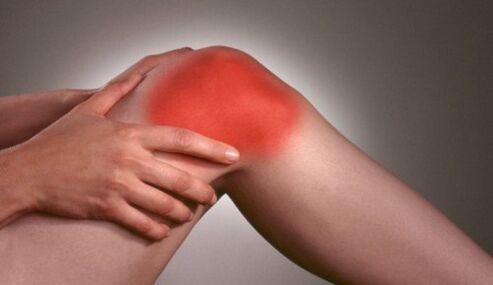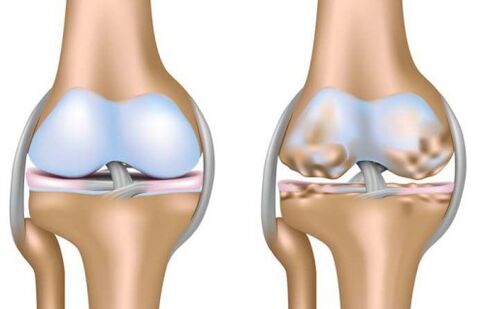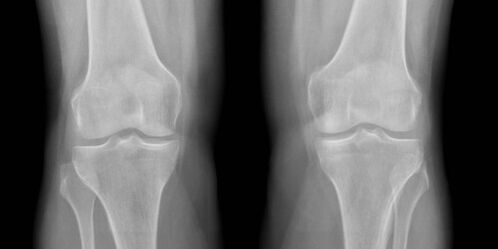Osteoarthritis of the knee joint (gonarthrosis) is a disease that causes deformity of the cartilage of the knee joint. This disease is especially common among the older generation. The function of the knee deteriorates, and therefore difficulties in its mobility and pain are the most important symptoms of the disease. Today, osteoarthritis of the knee joint is common among people aged 25-30. What about the causes of the disease and, accordingly, the diversity of its treatment. >There are two types of gonarthrosis: unilateral (affects only one knee) and bilateral (affects both knees). More often the disease occurs in its bilateral manifestations.

Reasons
Gonarthrosis, like coxarthrosis, most often manifests itself in old age. Although today there are no exceptions, and young people have symptoms of this disease. This suggests that the causes of gonarthrosis are different, and that each in its own way can affect the appearance, exacerbation, and treatment of the disease. There are also possibilities of an organism's genetic predisposition, ie. Osteoarthritis of the knee joint may be more common in some families than in others. In addition, the disease may not be genetically determined. Therefore, there are several causes of gonarthrosis.
- Various physical injuries of the knee (bruising, dislocation, etc. ).
- Large age-inappropriate loads (5-7% of all cases of gonarthrosis, as well as coxarthrosis).
- The patient is overweight (10% of all cases of gonarthrosis).
- Accompanying diseases, such as arthritis (5-7% of all cases of gonarthrosis, polyarthritis and coxarthrosis).
- Congenital weakness of the joints (3-5% of cases of gonarthrosis).
- Metabolic syndrome and metabolic problems in the body.
- Spasm of the muscles of the upper thigh (up to 50% of cases of gonarthrosis and coxarthrosis).

Symptoms
The symptoms of osteoarthritis of the knee joint are basically the same and appear in almost all patients. Patients also note that the exacerbation of pain occurs in the spring-autumn period and depends on weather changes. The main symptom of the disease is knee pain. It is often not immediately visible, but is noticeable after a long walk and is visible in the afternoon. The call may indicate stiffness in the knee while moving. If minor symptoms are ignored, then the disease can be triggered, which can have extremely undesirable consequences for the patient. Despite the main symptoms, there are a number of other symptoms of the disease:
- pain syndrome at rest, decreased quality during walking;
- restriction of movement of the knee joint and difficulty in controlling its mobility;
- knee stiffness;
- increased sensitivity in the knee area;
- swelling in the knee joint and swelling of the surrounding skin;
- deformation of the knee joint.
Assessment of the condition of the knee joint is carried out during a medical examination and radiography. Moreover, the stage of the disease of any osteoarthritis (including coxarthrosis, gonarthrosis, polyarthritis, etc. ) can be determined only if there is an X-ray, and only a doctor can assess such a situation. Therefore, it is extremely important not to self-diagnose and not to rush the results.
Degrees of gonarthrosis
1st degree
The knee joints did not withstand the deforming effects of the disease, but are visible with external signs and slight swelling of the periarticular skin, with noticeable changes in color. At the physiological level, hyaline is characterized by small changes in cartilage. As a result of the accumulation of a significant amount of joint fluid in the test, small joint deformities occur, which are accompanied by pain during walking. Other symptoms, such as limited mobility, are not observed. Therefore, it is difficult to follow them on radiography. This degree of disease is difficult to diagnose, but with a quick definition, its treatment will be more effective than other or tertiary gonarthrosis, as well as other types of osteoarthritis (coxarthrosis, polyarthritis).
II degree
The main symptom is unbearable or severe pain, even with a light load, which is aggravated by walking and lifting weights. Over time, this will make it difficult to bend the knee. At the physiological level, this is manifested by a sharp decrease in the volume of the cartilage layer, and in some places, its complete disappearance. According to the results of X-rays, this degree can be determined by marginal bone growth and density of the joint space. In the work of the joint, a characteristic crisis appears, especially with a long walk. Gradually, the patient may lose the ability to bend the knee or it will be given to him with great difficulty. The deforming effect is already manifested at this stage in the development of gonarthrosis, as well as with other types of osteoarthritis (coxarthrosis, polyarthritis). Visually, this is noticeable, and the surrounding skin becomes rough and discolored. At this stage it is better to start treatment complex and intensive. Both medicines and traditional treatments will be relevant here.

III degree
It is characterized by severe pain even when the knee joint is immobile or immobile. The effect of deformation is very noticeable, and significant changes in the structure of joints and adjacent tissues can be visually identified. At the physiological level, it is marked by the absence of cartilage tissue, which is easy to diagnose on radiography. Treatment of grade III arthrosis of the knee joint and other types of osteoarthritis (polyarthritis, coxarthrosis) is in fact an irreversible process. On the contrary, the main goal of such treatment will be to reduce pain and eliminate some of the symptoms of the disease.


























